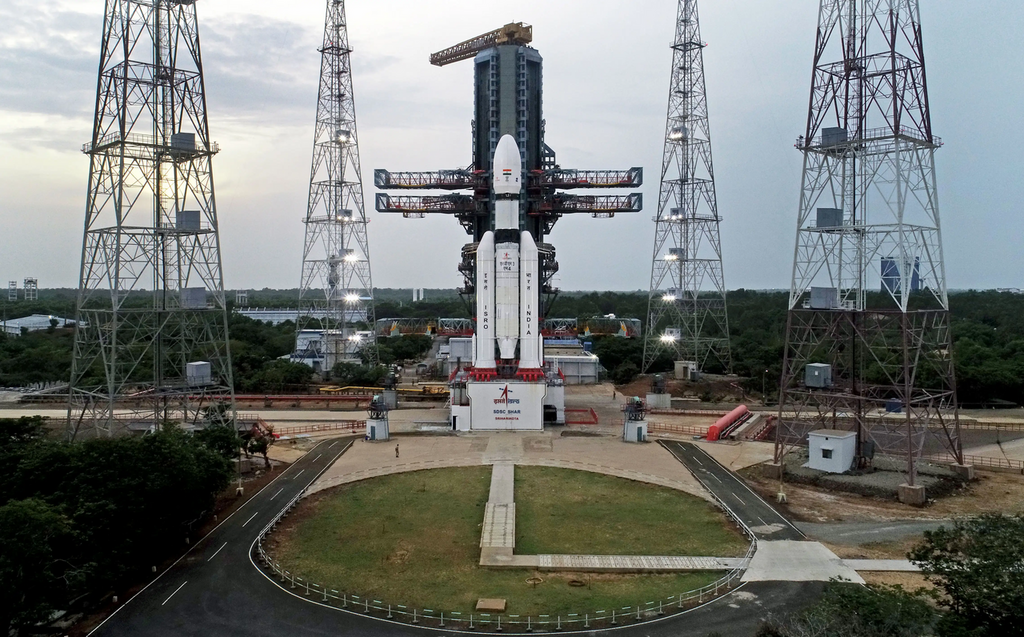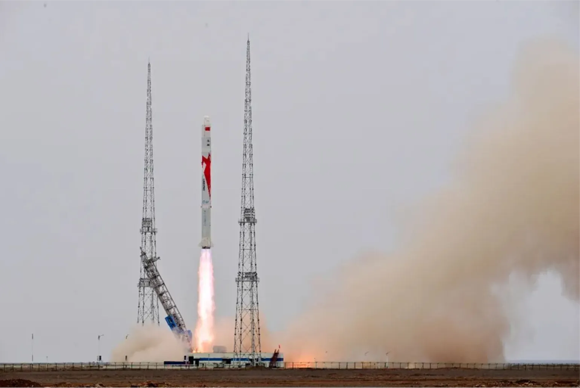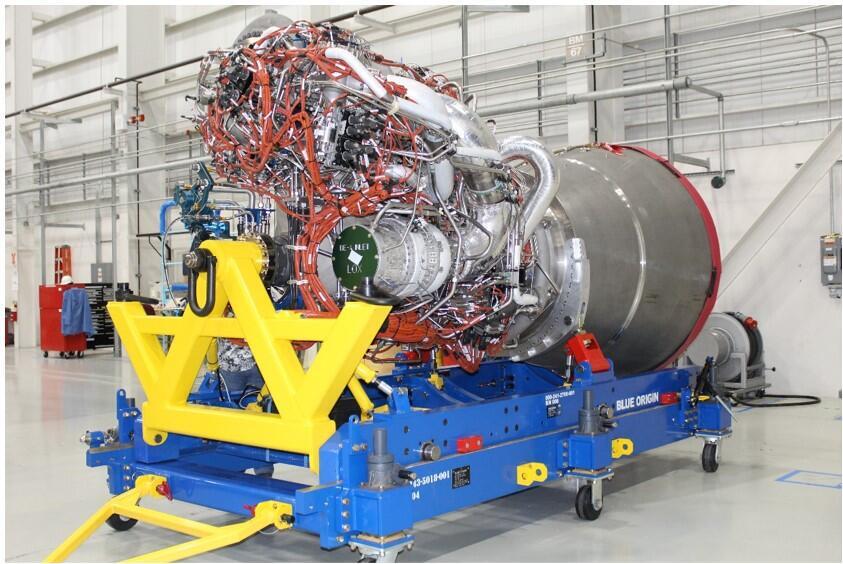Getting your Trinity Audio player ready...
The Race to the Lunar South Pole
On Friday, July 14, India launched its mission to land a spacecraft on the moon. The Chandrayaan-3 mission, launched off from the Satish Dhawan Space Center at Sriharikotaת on India's east coast, could make India the fourth country to achieve a soft landing on the moon, following the Soviet Union, the United States, and China. Moreover, it will be the first landing near the lunar south pole.
Read more:
The spacecraft was not launched directly toward the moon. Instead, it will orbit the Earth in progressively expanding circles, in a trajectory somewhat akin to the Israeli spacecraft Beresheet during the third stage of its launch. By August 6, it is expected to reach the moon and enter into orbit around it, gradually adjusting its course until it settles into a circular orbit roughly a hundred kilometers above the lunar surface. Once in this position, the lander will detach from the third stage, which will continue orbiting the moon and serve as a relay station. The landing is scheduled for August 23.
3 View gallery


Anticipated to be the first spacecraft to achieve a soft landing near the Moon's pole; The Chandrayaan-3 mission on an LVM3 M4 rocket set for launch
(Photo: Indian Space Agency, ISRO, Wikipedia)
The lander, which weighs 1.75 tons, is relatively large compared to other recent unmanned missions. It is an improved version of the Vikram lander from the Chandrayaan-2 mission, which crashed during a moon landing attempt in 2019, just a few months after the crash of Beresheet. The Indian space program has made several enhancements to the lander, including the addition of a landing engine and backup components for some systems.
Named Vikram, like its ill-fated predecessor, the lander carries several scientific instruments. Most notably, it houses a small lunar rover, weighing 26 kilograms, named Pragyan. The lander's instruments will measure the concentration of charged particles near the lunar surface, the ground temperature, its electrical conductivity, and monitor changes throughout the lunar day (approximately 14 Earth days). Though similar data have been collected in previous missions, none of these were gathered near the lunar poles. Additionally, the third stage of the rocket, which will continue operating as a satellite, houses a scientific instrument to measure the radiation of light reflected from the moon's surface, aiding in characterizing the composition of the lunar terrain. Tthe mission's scientific objectives are somewhat modest, as the primary goal for the Indian Space Agency is to successfully land and operate the mission on the lunar surface.
However, India's quest for a first landing near the lunar south pole may be challenged by Roscosmos, the Russian space agency. Roscosmos plans to launch its own lander, Luna 25, to the same destination. The Luna 25 mission borrows its name from the series of unmanned lunar landings undertaken by the Soviet Union, the last of which, Luna 24, occurred in 1976, returning approximately 170 grams of lunar dust to Earth.
The Luna 25 launch, initially planned for 2021, has been delayed numerous times due to various factors, including the Russian invasion of Ukraine, which led to the European Space Agency (ESA) canceling the supply of a mission-critical camera. The latest delay pushed the launch date from July to August 11. If there are no further delays, Luna could reach the moon before the Indian lander due to its shorter trajectory. Unlike Chandrayaan-3, the Russian lander does not include a rover and aims to land near the Boguslavsky crater at the lunar south pole to probe the ground for signs of frozen water.
Long live the new fuel
Chinese company LandSpace has surged ahead in the race to achieve orbit with a methane-powered rocket. The Zhuque-2 rocket, towering at about 50 meters, was launched this week from the Jiuquan Satellite Launch Center in the Gobi Desert. Shortly after, its second stage successfully entered Earth's orbit. Unlike a previous attempt in December 2022 when the company lost satellites due to a second-stage crash, this time the stage did not carry a payload.
3 View gallery


Leading the way in the new rocket propulsion technology; The launch of the Zhuque-2 rocket this week
(Photo: Ourspace)
Many companies are currently developing rockets fueled by a mixture of methane and oxygen, known as Methalox. Such engines offer superior thrust compared to conventional propulsion methods. The exceptional burning characteristics of methane result in fewer engine blockages, making them more suitable for reuse, which significantly reduces launch costs. Using methane also offers direct cost and safety benefits. Furthermore, methane can be synthesized from the Martian atmosphere, providing an opportunity to refuel rockets for a return journey from Mars. While methane production from local resources isn't feasible on the Moon, necessary oxygen can be produced there.
In this competition, LandSpace has overtaken giants like SpaceX, whose methane-fueled Starship failed in its initial attempt to reach space. Other contenders include U.S. company ULA, whose new methane-powered rocket, Vulcan Centaur, is yet to have its maiden launch; Blue Origin, which has been postponing the development of its methane rocket, New Glenn, for years; and Rocket Lab and Relativity Space—all have so far encountered setbacks or are yet to complete the development of this new technology.
Zhuque-2 is a medium-sized rocket, designed to deliver payloads of up to four tons to low Earth orbit. LandSpace CEO and founder Zhang Changwu announced in the Chinese newspaper Global Times that the rocket has now completed its developmental stages and is ready to transition into commercial production.
Engine troubles
Further delays are plaguing the development of new methane rockets: Blue Origin's large engine, designed for its heavy rocket New Glenn, exploded during a test in late June. The incident was reported this week by CNBC, and the company confirmed the details, reassuring that no one was injured in the accident. Blue Origin also stated that they have likely identified the root cause of the issue. According to the report, the explosion caused significant damage to the test facility.
3 View gallery


Another setback in the chain of problems and delays in the development of the new rockets; Blue Origin's BE-4 engine after delivery to ULA for installation in the Vulcan rocket, 2020
(Photo: ULA)
The engine in question, BE-4, is also slated for use in ULA's new rocket, Vulcan Centaur, which has yet to be launched. This rocket is intended to replace the heavy Delta 4 and Atlas 5 rockets, which are nearing retirement. The delay in finalizing the engine's development adds to a long list of problems and setbacks en route to the first launch of Vulcan Centaur, initially scheduled for May this year, with no new launch date set. The company is currently reevaluating the rocket's second stage following a failure that led to its explosion during a test a few months ago.
Due to the engine issue, the launch of Blue Origin's new rocket, New Glenn, is also further delayed. Originally, the rocket was set to fly already in 2020, but the company has yet to announce a new date for the anticipated launch.
Content distributed by Davidson Institute of Science.

